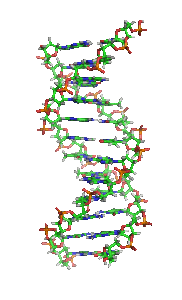|
Genomics - Global - World Health Organization (WHO)
Genomics is the study of the complete set of genes (the genome) of organisms, of the way genes work, interact with each other and with the environment. Genomics incorporates elements of genetics, but is concerned with the characterization of all genes of an organism, rather than individual genes.
WHO releases new principles for ethical human genomic data collection ...
The World Health Organization (WHO) has issued a set of principles for the ethical collection, access, use and sharing of human genomic data. Created with guidance from the WHO Technical Advisory Group on Genomics (TAG-G) and other international experts, these principles establish a global approach to help protect individual rights, promote equity and foster responsible collaboration in ...
Partner spotlight: Centre for Pathogen Genomics celebrates two years of ...
The Centre for Pathogen Genomics is a leading academic and training hub for infectious diseases genomics in the Asia-Pacific region at the University of Melbourne, based at the Doherty Institute. The Centre’s mission is to build collaborative partnerships to support accessible pathogen genomics globally, through translational research and research training; and also to provide support for ...
WHO global genomic surveillance strategy for pathogens with pandemic ...
The Strategy provides a high-level unifying framework to leverage existing capacities, address barriers and strengthen the use of genomic surveillance in the detection, monitoring and response to public health threats. Genomic surveillance is part of the broader surveillance and laboratory system, and its implementation should reinforce end-to-end capacities including sample collection ...
Technical Advisory Group on Genomics (TAG-G)
The Technical Advisory Group on Genomics (TAG-G) provides independent, strategic advice to WHO around technical areas relating to enhancing access to genomic knowledge and technologies for global health.
WHO establishes communities of practice for pathogen genomics surveillance
Within the pathogen genomics workstream, the group has focused on supporting harmonization and in-country deployment of the bioinformatics analysis of MPXV genome data to strengthen quality of the analysis. Additionally, the group is developing a guidance document outlining analytical considerations for MPXV genomic surveillance.
International Pathogen Surveillance Network (IPSN)
The International Pathogen Surveillance Network (IPSN) is a global network of pathogen genomic actors, brought together by the WHO Hub for Pandemic and Epidemic Intelligence, to accelerate progress in pathogen genomics, and improve public health decision-making. Pathogen genomic surveillance is the monitoring and analysis of the genetic material (the genome) of pathogens, such as viruses ...
Genomics costing tool - World Health Organization (WHO)
The first edition of the genomics costing tool (GCT) facilitates budgeting and resource mobilization for infrastructure, workforce, biosafety and quality assurance associated with SARS-CoV-2 genomic surveillance. This tool will be useful to country, regional and global policymakers, health administrators and economists, laboratory directors, quality managers, donor institutions and other ...
Guidance for human genome data collection, access, use and sharing
The WHO’s new document outlines a comprehensive set of globally applicable principles designed to guide stakeholders in the responsible collection, use, and sharing of human genome data. This document serves as a key resource to navigate complex issues surrounding data governance, with the aim of fostering transparency, promoting equity, and safeguarding individual and collective rights.
WHO releases step by step guide to help countries develop their ...
The COVID-19 pandemic highlighted the importance of genomics in our public health toolkit to prepare for and respond to pathogens with pandemic and epidemic potential. As countries build on the genomic surveillance gains from the COVID-19 pandemic, questions are arising. How should genomic surveillance capacities be sustained?
|

